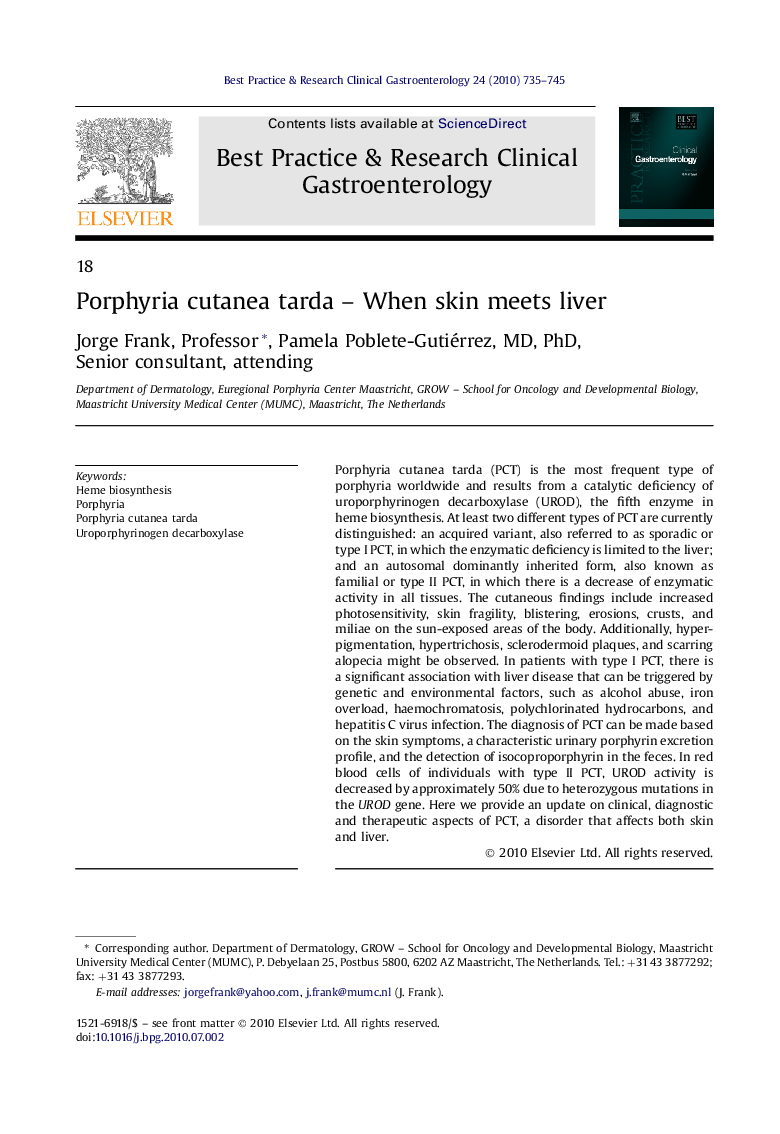| کد مقاله | کد نشریه | سال انتشار | مقاله انگلیسی | نسخه تمام متن |
|---|---|---|---|---|
| 3254299 | 1207192 | 2010 | 11 صفحه PDF | دانلود رایگان |

Porphyria cutanea tarda (PCT) is the most frequent type of porphyria worldwide and results from a catalytic deficiency of uroporphyrinogen decarboxylase (UROD), the fifth enzyme in heme biosynthesis. At least two different types of PCT are currently distinguished: an acquired variant, also referred to as sporadic or type I PCT, in which the enzymatic deficiency is limited to the liver; and an autosomal dominantly inherited form, also known as familial or type II PCT, in which there is a decrease of enzymatic activity in all tissues. The cutaneous findings include increased photosensitivity, skin fragility, blistering, erosions, crusts, and miliae on the sun-exposed areas of the body. Additionally, hyperpigmentation, hypertrichosis, sclerodermoid plaques, and scarring alopecia might be observed. In patients with type I PCT, there is a significant association with liver disease that can be triggered by genetic and environmental factors, such as alcohol abuse, iron overload, haemochromatosis, polychlorinated hydrocarbons, and hepatitis C virus infection. The diagnosis of PCT can be made based on the skin symptoms, a characteristic urinary porphyrin excretion profile, and the detection of isocoproporphyrin in the feces. In red blood cells of individuals with type II PCT, UROD activity is decreased by approximately 50% due to heterozygous mutations in the UROD gene. Here we provide an update on clinical, diagnostic and therapeutic aspects of PCT, a disorder that affects both skin and liver.
Journal: Best Practice & Research Clinical Gastroenterology - Volume 24, Issue 5, October 2010, Pages 735–745